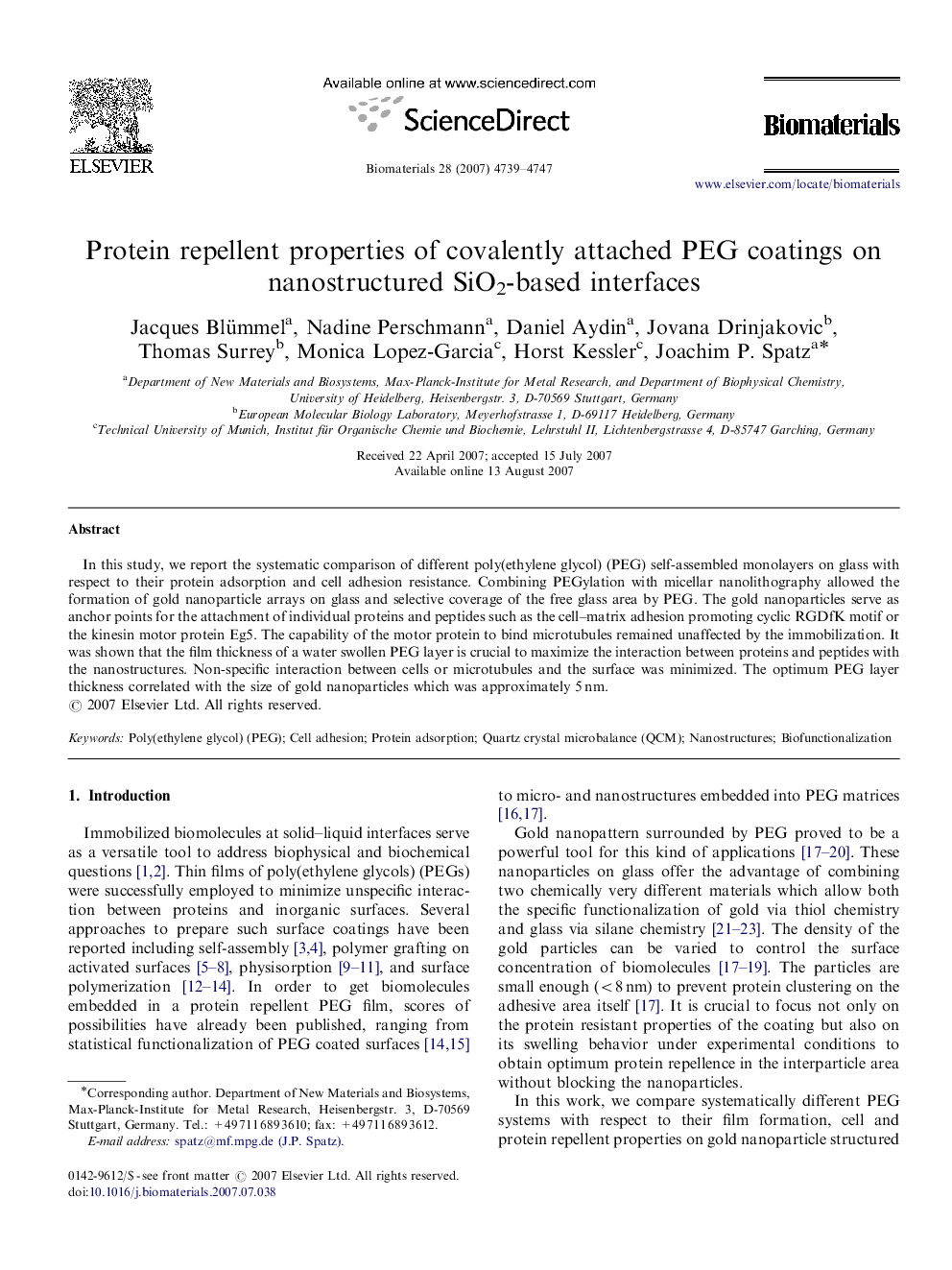| کد مقاله | کد نشریه | سال انتشار | مقاله انگلیسی | نسخه تمام متن |
|---|---|---|---|---|
| 10643 | 696 | 2007 | 9 صفحه PDF | دانلود رایگان |

In this study, we report the systematic comparison of different poly(ethylene glycol) (PEG) self-assembled monolayers on glass with respect to their protein adsorption and cell adhesion resistance. Combining PEGylation with micellar nanolithography allowed the formation of gold nanoparticle arrays on glass and selective coverage of the free glass area by PEG. The gold nanoparticles serve as anchor points for the attachment of individual proteins and peptides such as the cell–matrix adhesion promoting cyclic RGDfK motif or the kinesin motor protein Eg5. The capability of the motor protein to bind microtubules remained unaffected by the immobilization. It was shown that the film thickness of a water swollen PEG layer is crucial to maximize the interaction between proteins and peptides with the nanostructures. Non-specific interaction between cells or microtubules and the surface was minimized. The optimum PEG layer thickness correlated with the size of gold nanoparticles which was approximately 5 nm.
Journal: Biomaterials - Volume 28, Issue 32, November 2007, Pages 4739–4747